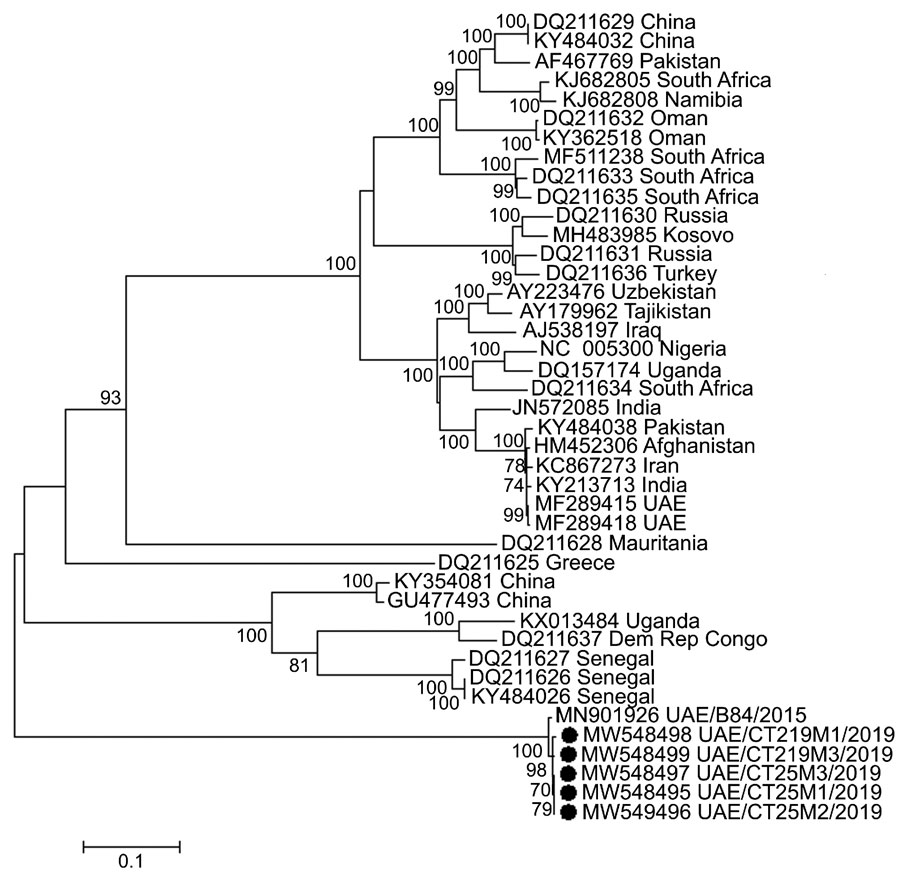Volume 27, Number 9—September 2021
Dispatch
Association of Dromedary Camels and Camel Ticks with Reassortant Crimean-Congo Hemorrhagic Fever Virus, United Arab Emirates
Figure

Figure. Molecular phylogeny of Crimean-Congo hemorrhagic fever virus medium RNA segments, United Arab Emirates, 2019 (solid circles), and reference viruses. Viruses from this study were obtained from camel ticks (Hyalomma dromedarii) removed from dromedary camels at a large livestock market in the emirate of Abu Dhabi. Other virus sequences included were selected as representatives of the major small and large RNA segment genotypes for which full-length sequences of all 3 viral genomic segments were available. Viruses listed include GenBank accession number and country of origin. Maximum-likelihood analysis of coding-complete sequences was performed by using the general time reversible plus invariant sites plus gamma distribution substitution model and 4 categories with >500 bootstrap replicates. Numbers along branches are percentage support, showing only values >65%, and branch length is relative to the number of substitutions per site, as indicated by the scale bar. Dem Rep Congo, Democratic Republic of the Congo; UAE, United Arab Emirates.